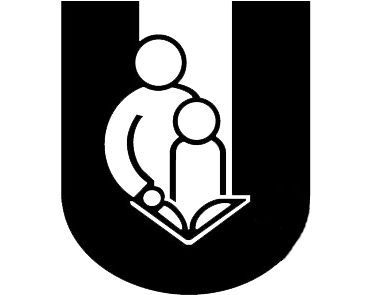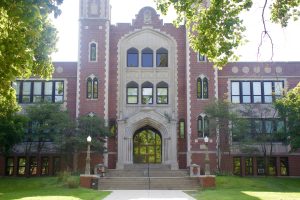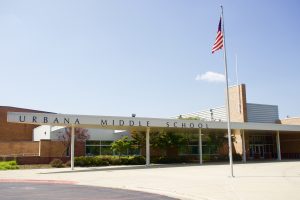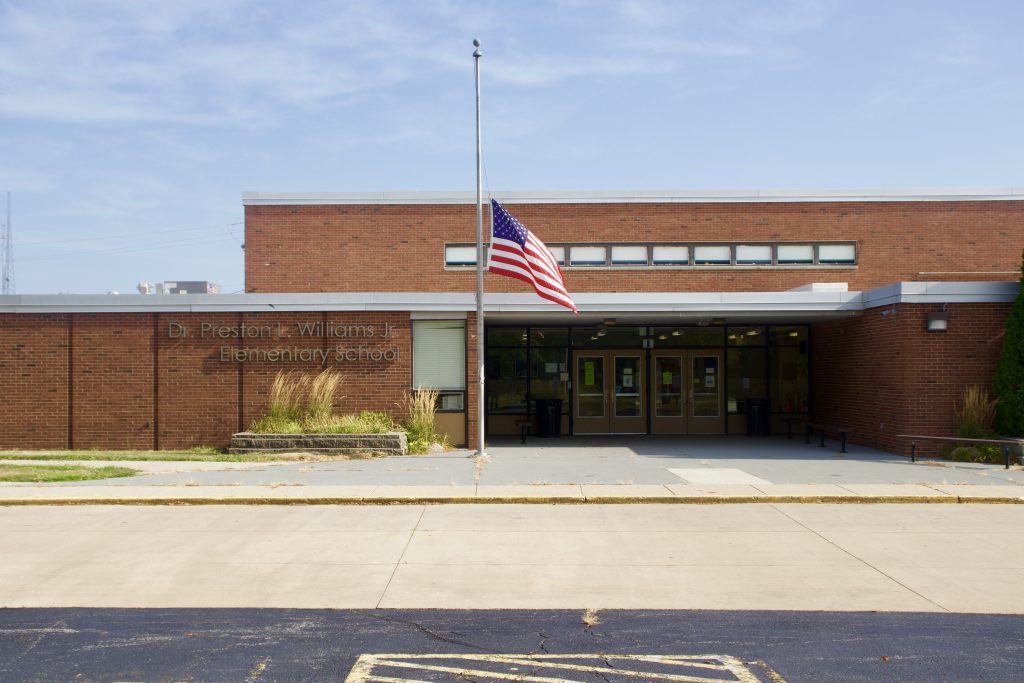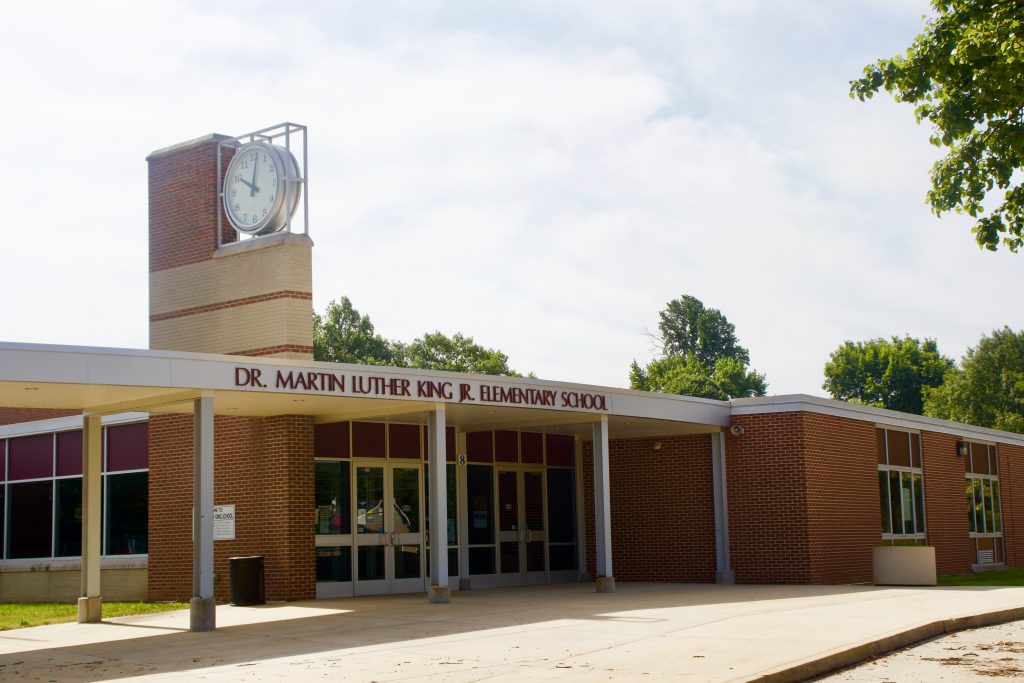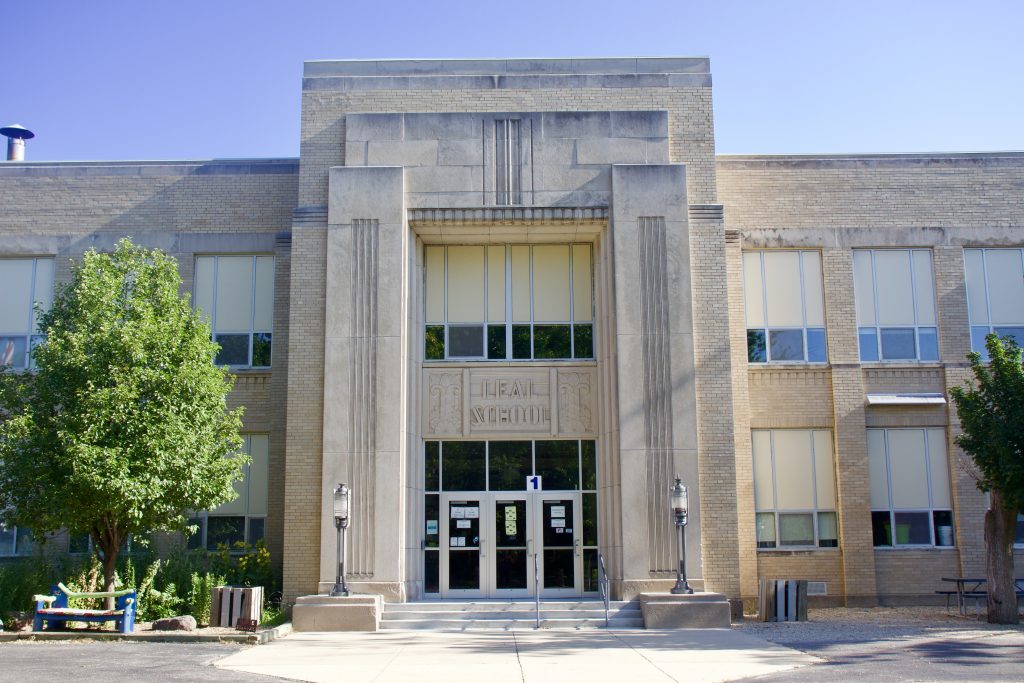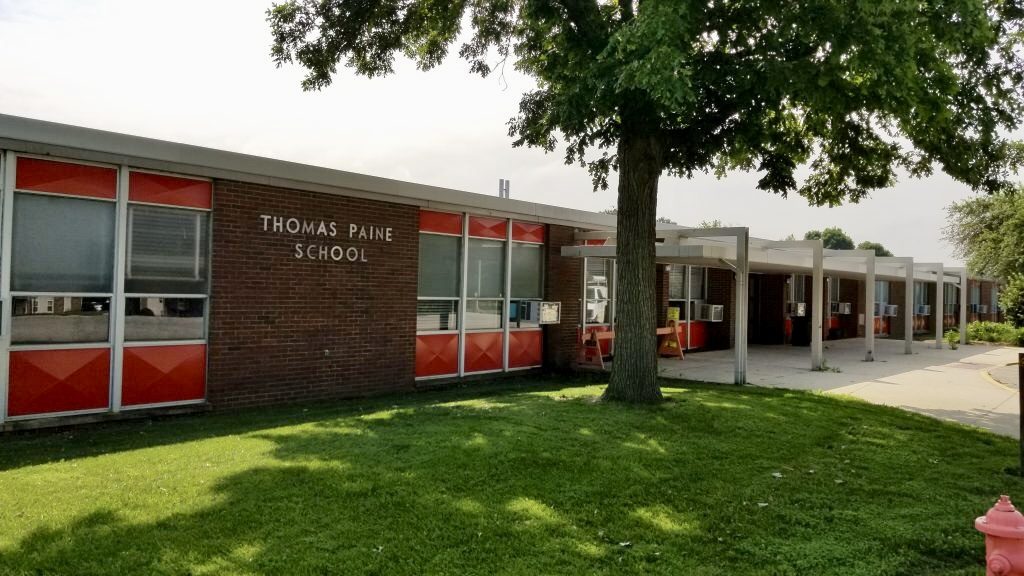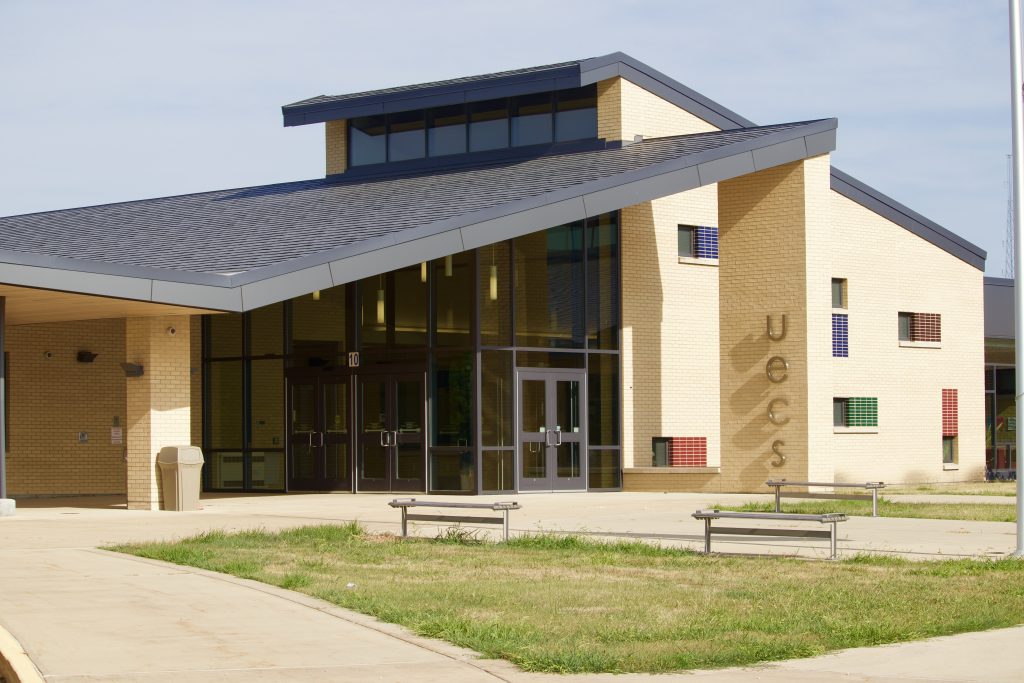POLICIES & PROCEDURES
7:180 Prevention of and Response to Bullying, Intimidation, and Harassment
Bullying, intimidation, and harassment diminish a student’s ability to learn and a school’s ability to educate. Preventing students from engaging in these disruptive behaviors and providing all students equal access to a safe, non-hostile learning environment are important District goals.
Bullying on the basis of actual or perceived race, color, national origin, military status, unfavorable discharge status from the military service, sex, sexual orientation, gender identity, gender-related identity or expression, ancestry, age, religion, physical or mental disability, order of protection status, status of being homeless, or actual or potential marital or parental status, including pregnancy, association with a person or group with one or more of the aforementioned actual or perceived characteristics, or any other distinguishing characteristic is prohibited in each of the following situations:
- During any school-sponsored education program or activity.
- While in school, on school property, on school buses or other school vehicles, at designated school bus stops waiting for the school bus, or at school-sponsored or school-sanctioned events or activities.
- Through the transmission of information from a school computer, a school computer network, or other similar electronic school equipment.
- Through the transmission of information from a computer that is accessed at a non-school related location, activity, function, or program or from the use of technology or an electronic device that is not owned, leased, or used by a school district or school if the bullying causes a substantial disruption to the educational process or orderly operation of a school. This item (4) applies only in cases in which a school administrator or teacher receives a report that bullying through this means has occurred and it does not require a district or school to staff or monitor any nonschool-related activity, function, or program.
Definitions from 105 ILCS 5/27-23.7
Bullying includes cyberbullying and means any severe or pervasive physical or verbal act or conduct, including communications made in writing or electronically, directed toward a student or students that has or can be reasonably predicted to have the effect of one or more of the following:
- Placing the student or students in reasonable fear of harm to the student’s or students’ person or property;
- Causing a substantially detrimental effect on the student’s or students’ physical or mental health;
- Substantially interfering with the student’s or students’ academic performance; or
- Substantially interfering with the student’s or students’ ability to participate in or benefit from the services, activities, or privileges provided by a school.
Bullying may take various forms, including without limitation one or more of the following: harassment, threats, intimidation, stalking, physical violence, sexual harassment, sexual violence, theft, public humiliation, destruction of property, or retaliation for asserting or alleging an act of bullying. This list is meant to be illustrative and non-exhaustive.
Cyberbullying means bullying through the use of technology or any electronic communication, including without limitation any transfer of signs, signals, writing, images, sounds, data, or intelligence of any nature transmitted in whole or in part by a wire, radio, electromagnetic system, photo-electronic system, or photo-optical system, including without limitation electronic mail, Internet communications, instant messages, or facsimile communications. Cyberbullying includes the creation of a webpage or blog in which the creator assumes the identity of another person or the knowing impersonation of another person as the author of posted content or messages if the creation or impersonation creates any of the effects enumerated in the definition of bullying. Cyberbullying also includes the distribution by electronic means of a communication to more than one person or the posting of material on an electronic medium that may be accessed by one or more persons if the distribution or posting creates any of the effects enumerated in the definition of bullying. Restorative measures means a continuum of school-based alternatives to exclusionary discipline, such as suspensions and expulsions, that: (i) are adapted to the particular needs of the school and community, (ii) contribute to maintaining school safety, (iii) protect the integrity of a positive and productive learning climate, (iv) teach students the personal and interpersonal skills they will need to be successful in school and society, (v) serve to build and restore relationships among students, families, schools, and communities, (vi) reduce the likelihood of future disruption by balancing accountability with an understanding of students’ behavioral health needs in order to keep students in school, and (vii) increase student accountability if the incident of bullying is based on religion, race, ethnicity, or any other category that is identified in the Ill. Human Rights Act.
School personnel means persons employed by, on contract with, or who volunteer in a school district, including without limitation school and school district administrators, teachers, school social workers, school counselors, school psychologists, school nurses, cafeteria workers, custodians, bus drivers, school resource officers, and security guards.
Bullying Prevention and Response Plan
The Superintendent or designee shall develop and maintain a bullying prevention and response plan that advances the District’s goal of providing all students with a safe learning environment free of bullying and harassment. This plan must be consistent with the following requirements:
- Using the definition of bullying as provided in this policy, the Superintendent or designee shall emphasize to the school community that: (1) the District prohibits bullying, and (2) all students should conduct themselves with a proper regard for the rights and welfare of other students. This may include a process for commending or acknowledging students for demonstrating appropriate behavior.
- Bullying is contrary to State law and the policy of this District. However, nothing in the District’s bullying prevention and response plan is intended to infringe upon any right to exercise free expression or the free exercise of religion or religiously based views protected under the First Amendment to the U.S. Constitution or under Section 3 of Article I of the Illinois Constitution.
- Students are encouraged to immediately report bullying. A report may be made orally or in writing to the Nondiscrimination Coordinator, Building Principal, Assistant Building Principal, Dean of Students, a Complaint Manager, or any staff member with whom the student is comfortable speaking. Anyone, including staff members and parents/guardians, who has information about actual or threatened bullying is encouraged to report it to the District named officials or any staff member. The District named officials and all staff members are available for help with a bully or to make a report about bullying. Anonymous reports are also accepted; however, this shall not be construed to permit formal disciplinary action solely on the basis of an anonymous report.
- Consistent with federal and State laws and rules governing student privacy rights, the Superintendent or designee shall promptly inform parent(s)/guardian(s) of all students involved in an alleged incident of bullying and discuss, as appropriate, the availability of social work services, counseling, school psychological services, other interventions, and restorative measures.
- The Superintendent or designee shall promptly investigate and address reports of bullying, by, among other things:
- Making all reasonable efforts to complete the investigation within 10 school days after the date the report of the incident of bullying was received and taking into consideration additional relevant information received during the course of the investigation about the reported incident of bullying.
- Involving appropriate school support personnel and other staff persons with knowledge, experience, and training on bullying prevention, as deemed appropriate, in the investigation process.
- Notifying the Building Principal or school administrator or designee of the report of the incident of bullying as soon as possible after the report is received.
- Consistent with federal and State laws and rules governing student privacy rights, providing parents and guardians of the students who are parties to the investigation information about the investigation and an opportunity to meet with the principal or school administrator or his or her designee to discuss the investigation, the findings of the investigation, and the actions taken to address the reported incident of bullying.
- The Superintendent or designee shall use interventions to address bullying,which may include, but are not limited to, school social work services, restorative measures, social-emotional skill building, counseling, school psychological services, and community-based services.
- A reprisal or retaliation against any person who reports an act of bullying is prohibited. Any person’s act of reprisal or retaliation will be subject to disciplinary action, up to and including discharge with regard to employees, or suspension and/or expulsion with regard to students.
- A student will not be punished for reporting bullying or supplying information, even if the District’s investigation concludes that no bullying occurred. However, a person who is found to have falsely accused another of bullying, as a means of retaliation, as a means of bullying, or provided false information will be treated as either: (a) bullying, (b) student discipline up to and including suspension and/or expulsion, and/or (c) both (a) and (b) for purposes of determining any consequences or other appropriate remedial actions.
- The District’s bullying prevention and response plan is based on the engagement of a range of school stakeholders, including students and parents/guardians.
- The Superintendent or designee shall post this policy on the District’s website, if any, and include it in the student handbook, and, where applicable, post it where other policies, rules, and standards of conduct are currently posted. The policy must be distributed annually to parents/guardians, students, and school personnel (including new employees when hired), and must also be provided periodically throughout the school year to students and faculty.
- Pursuant to State law and policy 2:240, Board Policy Development, the Board monitors this policy every two years by conducting a review and re-evaluation of this policy to make any necessary and appropriate revisions. The Superintendent or designee shall assist the Board with its re-evaluation and assessment of this policy’s outcomes and effectiveness. Updates to this policy will reflect any necessary and appropriate revisions. This process shall include, without limitation:
- The frequency of victimization;
- Student, staff, and family observations of safety at a school;
- Identification of areas of a school where bullying occurs;
- The types of bullying utilized; and
- Bystander intervention or participation.
The evaluation process may use relevant data and information that the District already collects for other purposes. Acceptable documentation to satisfy the re-evaluated policy submission include one of the following:
- An updated version of the policy with the amendment/modification date included in the reference portion of the policy;
- If no revisions are deemed necessary, a copy of board minutes indicating that the policy was re-evaluated and no changes were deemed to be necessary; or
- A signed statement from the Board President indicating that the Board re-evaluated the policy and no changes to it were necessary.
The Superintendent or designee must post the information developed as a result of the policy re-evaluation on the District’s website, or if a website is not available, the information must be provided to school administrators, Board members, school personnel, parents/guardians, and students. Reviews and re-evaluations in years they are due must be submitted to ISBE by September 30.
- The District’s bullying prevention plan must be consistent with other Board policies.
2:270 Discrimination and Harassment on the Basis of Race, Color, and National Origin Prohibited
Discrimination and harassment on the basis of race, color, or national origin negatively affect a student’s ability to learn and an employee’s ability to work. Providing an educational and workplace environment free from such discrimination and harassment is an important District goal. The District does not discriminate on the basis of actual or perceived race, color, or national origin in any of its education programs or activities, and it complies with federal and State non discrimination laws.
Examples of Prohibited Conduct
Examples of conduct that may constitute discrimination on the basis of race, color, or national origin include: disciplining students more harshly and frequently because of their race, color, or national origin; denying students access to high-rigor academic courses, extracurricular activities, or other educational opportunities based on their race, color, or national origin; denying language services or other educational opportunities to English learners; and assigning students special education services based on a student’s race, color, or national origin.
Harassment is a form of prohibited discrimination. Examples of conduct that may constitute harassment on the basis of race, color, or national origin include: the use of racial, ethnic or ancestral slurs or stereotypes; taunts; name-calling; offensive or derogatory remarks about a person’s actual or perceived race, color, or national origin; the display of racially-offensive symbols; racially-motivated physical threats and attacks; or other hateful conduct.
Making a Report or Complaint; Investigation Process
Individuals are encouraged to promptly report claims or incidences of discrimination or harassment based on race, color, or national origin to the Nondiscrimination Coordinator, a Complaint Manager, or any employee with whom the student is comfortable speaking. Reports under this policy will be processed under Board policy 2:260, Uniform Grievance Procedure.
Any District employee who receives a report or complaint of discrimination or harassment must promptly forward the report or complaint to the Nondiscrimination Coordinator or a Complaint Manager. Any employee who fails to promptly comply may be disciplined, up to and including discharge.
Reports and complaints of discrimination or harassment will be confidential to the greatest extent practicable, subject to the District’s duty to investigate and maintain an educational environment that is productive, respectful, and free of unlawful discrimination, including harassment. This policy does not impair or otherwise diminish the existing rights of unionized employees to request an exclusive bargaining representative to be present during any investigatory interviews, nor does this policy diminish any rights available under an applicable collective bargaining agreement, including, but not limited to, a grievance procedure.
Federal and State Agencies If the District fails to take necessary corrective action to stop harassment based on race, color, or national origin, further relief may be available through the Ill. Dept. of Human Rights (IDHR) or the U.S. Dept. of Education’s Office for Civil Rights. To contact IDHR, go to: https://dhr.illinois.gov/about-us/contact-idhr.html or call (312) 814-6200 (Chicago) or (217) 785 5100 (Springfield).
Prevention and Response Program The Superintendent or designee shall establish a prevention and response program to respond to complaints of discrimination based on race, color, and national origin, including harassment, and retaliation. The program shall include procedures for responding to complaints which:
- Reduce or remove, to the extent practicable, barriers to reporting discrimination, harassment, and retaliation;
- Permit any person who reports or is the victim of an incident of alleged discrimination, harassment, or retaliation to be accompanied when making a report by a support individual of the person’s choice who complies with the District’s policies and rules;
- Permit anonymous reporting, except that an anonymous report may not be the sole basis of any disciplinary action;
- Offer remedial interventions or take such disciplinary action as may be appropriate on a case-by-case basis;
- Offer, but do not require or unduly influence, a person who reports or is the victim of an incident of harassment or retaliation the option to resolve allegations directly with the accused; and
- Protects a person who reports or is the victim of an incident of harassment or retaliation from suffering adverse consequences as a result of a report of, investigation of, or a response to the incident.
Policy Posting and Distribution
This policy shall be posted on the District’s website. The Superintendent shall annually inform staff members of this policy by posting it in a prominent and accessible location such as the District website, employee handbook, staff intranet site, and/or in other areas where policies and rules of conduct are made available to staff. The Superintendent shall annually inform students and their parents/guardians of this policy by posting it on the District’s website and including an age- appropriate summary of the policy in the student handbook(s).
Enforcement
Any District employee who is determined, after an investigation, to have engaged in conduct prohibited by this policy will be subject to remedial action and/or disciplinary action, up to and including discharge.
Any District student who is determined, after an investigation, to have engaged in conduct prohibited by this policy will be subject to remedial action and/or disciplinary action, including but not limited to, suspension and expulsion consistent with Board policy 7:190, Student Behavior.
Any third party who is determined, after an investigation, to have engaged in conduct prohibited by this policy will be addressed in accordance with the authority of the Board in the context of the relationship of the third party to the District, e.g., vendor, parent, invitee, etc. Any person making a knowingly false accusation regarding prohibited conduct will likewise be subject to remedial and/or disciplinary action.
Retaliation Prohibited Retaliation against any person for bringing complaints, participating in the complaint process, or otherwise providing information about discrimination or harassment based on race, color, or national origin is prohibited (see Board policy 2:260, Uniform Grievance Procedure). Individuals should report allegations of retaliation to the Building Principal, an administrator, the Nondiscrimination Coordinator, and/or a Complaint Manager.
LEGAL REF.:
42 U.S.C. §2000d, Title VI of the Civil Rights Act of 19 64; 34 C.F.R. Part 100. 42 U.S.C. §2000e et seq., Title VII of the Civil Rights Act of 1964; 29 C.F.R. Part 1601. 105 ILCS 5/22-95 (final citation pending). 775 ILCS 5/1-101 et seq., Illinois Human Rights Act. CROSS REF.: 2:260 (Uniform Grievance Procedure), 5:10 (Equal Employment Opportunity and Minority Recruitment), 5:20 (Workplace Harassment Prohibited), 5:90 (Abused and Neglected Child Reporting), 5:120 (Employee Ethics; Code of Professional Conduct; and Conflict of Interest), 7:10 (Equal Educational Opportunities), 7:20 (Harassment of Students Prohibited), 7:180 (Prevention of and Response to Bullying, Intimidation, and Harassment), 7:190 (Student Behavior), 7:240 (Conduct Code for Participants in Extracurricular Activities)
Adopted: June 18, 2024
2:260 Uniform Grievance Procedure
A student, parent/guardian, employee, or community member should notify any District Complaint Manager if he or she believes that the Board of Education, its employees, or its agents have violated his or her rights guaranteed by the State or federal Constitution, State or federal statute, or Board policy, or has a complaint regarding any one of the following:
- Title II of the Americans with Disabilities Act, 42 U.S.C. §12101 et seq.
- Section 504 of the Rehabilitation Act of 1973, 29 U.S.C. §791 et seq.
- Discrimination and/or harassment on the basis of race, color, or national origin prohibited by the Illinois Human Rights Act, 775 ILCS 5/; Title VI of the Civil Rights Act of 1964, 42 U.S.C. §2000d et seq.; and/or Title VII of the Civil Rights Act of 1964, 42 U.S.C. §2000e et seq. (see Board policy 2:270, Discrimination and Harassment on the Basis of Race, Color, and National Origin Prohibited)
- Title VII of the Civil Rights Act of 1964, 42 U.S.C. §2000e et seq. (see also number 4, above, for discrimination and/or harassment on the basis of race, color, or national origin)
- Sexual harassment prohibited by the State Officials and Employees Ethics Act, 5 ILCS 430/70- 5(a); Illinois Human Rights Act, 775 ILCS 5/; and Title VII of the Civil Rights Act of 1964, 42 U.S.C. §2000e et seq. (Title IX sexual harassment complaints are addressed under Board policy 2:265, Title IX Grievance Procedure)
- Breastfeeding accommodations for students, 105 ILCS 5/10-20.60
- Bullying, 105 ILCS 5/27-23.7
- Misuse of funds received for services to improve educational opportunities for educationally disadvantaged or deprived children
- Curriculum, instructional materials, and/or programs
- Victims’ Economic Security and Safety Act, 820 ILCS 180/
- Illinois Equal Pay Act of 2003, 820 ILCS 112/
- Provision of services to homeless students
- Illinois Whistleblower Act, 740 ILCS 174/
- Misuse of genetic information prohibited by the Illinois Genetic Information Privacy Act, 410 ILCS 513/; and Titles I and II of the Genetic Information Nondiscrimination Act, 42 U.S.C. §2000ff et seq.
- Employee Credit Privacy Act, 820 ILCS 70/
The Complaint Manager will first attempt to resolve complaints without resorting to this grievance procedure. If a formal complaint is filed under this policy, the Complaint Manager will address the complaint promptly and equitably. A student and/or parent/guardian filing a complaint under this policy may forego any informal suggestions and/or attempts to resolve it and may proceed directly to this grievance procedure. The Complaint Manager will not require a student or parent/guardian complaining of any form of harassment to attempt to resolve allegations directly with the accused (or the accused’s parent(s)/guardian(s)); this includes mediation.
Right to Pursue Other Remedies Not Impaired
The right of a person to prompt and equitable resolution of a complaint filed under this policy shall not be impaired by the person’s pursuit of other remedies, e.g., criminal complaints, civil actions, etc. Use of this grievance procedure is not a prerequisite to the pursuit of other remedies and use of this grievance procedure does not extend any filing deadline related to the pursuit of other remedies. If a person is pursuing another remedy subject to a complaint under this policy, the District will continue with a simultaneous investigation under this policy.
Deadlines
All deadlines under this policy may be extended by the Complaint Manager as he or she deems appropriate. As used in this policy, school business days means days on which the District’s main office is open.
Filing a Complaint
A person (hereinafter Complainant) who wishes to avail him or herself of this grievance procedure may do so by filing a complaint with any District Complaint Manager. The Complainant shall not be required to file a complaint with a particular Complaint Manager and may request a Complaint Manager of the same gender. The Complaint Manager may request the Complainant to provide a written statement regarding the nature of the complaint or require a meeting with a student’s parent(s)/guardian(s). The Complaint Manager shall assist the Complainant as needed.
For any complaint alleging bullying and/or cyberbullying of students, the Complaint Manager or designee shall process and review the complaint under Board policy 7:180, Prevention of and Response to Bullying, Intimidation, and Harassment, in addition to any response required by this policy.
For any complaint alleging sex discrimination that, if true, would implicate Title IX of the Education Amendments of 1972 (20 U.S.C. §1681 et seq.), the Title IX Coordinator or designee shall process and review the complaint under Board policy 2:265, Title IX Grievance Procedure.
For any complaint alleging harassment on the basis of race, color, or national origin, the Nondiscrimination Coordinator or a Complaint Manager or designee shall process and review the complaint under Board policy 2:270, Discrimination and Harassment on the Basis of Race, Color, and National Origin Prohibited, in addition to any response required by this policy.
For any complaint alleging sexual harassment or other violation of Board policy 5:20, Workplace Harassment Prohibited, the Nondiscrimination Coordinator or a Complaint Manager or designee shall process and review the complaint according to that policy, in addition to any response required by this policy, and shall consider whether an investigation under Board policy 5:120, Employee Ethics; Code of Professional Conduct; and Conflict of Interest, should be initiated.
Investigation Process
The Complaint Manager will investigate the complaint or appoint a qualified person to undertake the investigation on his or her behalf. The Complaint Manager shall ensure both parties have an equal opportunity to present evidence during an investigation. The complaint and identity of the Complainant will not be disclosed except: (1) as required by law, this policy, or any collective bargaining agreement, (2) as necessary to fully investigate the complaint, or (3) as authorized by the Complainant.
The identity of any student witnesses will not be disclosed except: (1) as required by law, this policy, or any collective bargaining agreement, (2) as necessary to fully investigate the complaint, or (3) as authorized by the parent/guardian of the student witness, or by the student if the student is 18 years of age or older.
The Complaint Manager will inform, at regular intervals, the person(s) filing a complaint under this policy about the status of the investigation. Within 30 school business days after the date the complaint was filed, the Complaint Manager shall file a written report of his or her findings with the Superintendent. The Complaint Manager may request an extension of time from the Superintendent.
The Superintendent will keep the Board informed of all complaints.
If a complaint contains allegations involving the Superintendent or Board member(s), the written report shall be filed directly with the Board, which will make a decision in accordance with paragraph four of the following section of this policy.
Decision and Appeal
Within five school business days after receiving the Complaint Manager’s report, the Superintendent shall provide his or her written decision to the Complainant and the accused as well as to the Complaint Manager. All decisions shall be based upon the preponderance of evidence standard.
Within 10 school business days after receiving the Superintendent’s decision, the Complainant or the accused may appeal the decision to the Board by making a written request to the Complaint Manager. The Complaint Manager shall promptly forward all materials relative to the complaint and appeal to the Board.
Within 30 school business days after an appeal of the Superintendent’s decision, the Board shall affirm, reverse, or amend the Superintendent’s decision or direct the Superintendent to gather additional information. Within five school business days after the Board’s decision, the Superintendent shall inform the Complainant and the accused of the Board’s action.
For complaints containing allegations involving the Superintendent or Board member(s), within 30 school business days after receiving the Complaint Manager’s or outside investigator’s report, the Board shall provide its written decision to the Complainant and the accused, as well as to the Complaint Manager.
This policy shall not be construed to create an independent right to a hearing before the Superintendent or Board. The failure to strictly follow the timelines in this grievance procedure shall not prejudice any party.
Appointing a Nondiscrimination Coordinator and Complaint Managers
The Superintendent shall appoint a Nondiscrimination Coordinator to manage the District’s efforts to provide equal opportunity employment and educational opportunities and prohibit the harassment of employees, students, and others. The Nondiscrimination Coordinator also serves as the District’s Title IX Coordinator.
The Superintendent shall appoint at least one Complaint Manager to administer this policy. If possible, the Superintendent will appoint two Complaint Managers, each of a different gender. The District’s Nondiscrimination Coordinator may be appointed as one of the Complaint Managers.
The Superintendent shall insert into this policy and keep current the names, office addresses, email addresses, and telephone numbers of the Nondiscrimination Coordinator and the Complaint Managers. The Superintendent or designee shall ensure that students, parents/guardians, employees, and members of the community are informed of the contact information for the District’s Nondiscrimination Coordinator and Complaint Managers on an annual basis.
Nondiscrimination Coordinator:
Angi Franklin, Assistant Superintendent of Human Resources | 1101 East University Ave., Suite B, Urbana, IL 61802 | afranklin@usd116.org | 217-384-3641
Complaint Managers:
Angi Franklin, Assistant Superintendent of Human Resources | 1101 East University Ave., Suite B, Urbana, IL 61802 | afranklin@usd116.org | 217-384-3641
Laura Taylor, Executive Director of Leadership Development | 1101 East University Ave., Suite B, Urbana, IL 61802 | ltaylor@usd116.org | 217-384-3651
LEGAL REF.:
- 8 U.S.C. §1324a et seq., Immigration Reform and Control Act.
- 20 U.S.C. §1232g, Family Education Rights Privacy Act.
- 20 U.S.C. §1400, The Individuals with Disabilities Education Act.
- 20 U.S.C. §1681 et seq., Title IX of the Education Amendments; 34 C.F.R. Part 106.
- 29 U.S.C. §206(d), Equal Pay Act.
- 29 U.S.C. §621 et seq., Age Discrimination in Employment Act.
- 29 U.S.C. §791 et seq., Rehabilitation Act of 1973.
- 29 U.S.C. §2612, Family and Medical Leave Act.
- 42 U.S.C. §2000d et seq., Title VI of the Civil Rights Act of 1964.
- 42 U.S.C. §2000e et seq., Title VII of the Civil Rights Act of 1964.
- 42 U.S.C. §2000e et seq., Equal Employment Opportunities Act (Title VII of the Civil Rights Act).
- 42 U.S.C. §2000ff et seq., Genetic Information Nondiscrimination Act.
- 42 U.S.C. §11431 et seq., McKinney-Vento Homeless Assistance Act.
- 42 U.S.C. §12101 et seq., Americans With Disabilities Act; 28 C.F.R. Part 35.
- 105 ILCS 5/2-3.8, 5/3-10, 5/10-20, 5/10-20.5, 5/10-20.7a, 5/10-20.60, 5/10-20.69, 5/10-20.75, 5/10- 22.5, 5/22-19, 5/22-95 (final citation pending), 5/24-4, 5/27-1, 5/27-23.7, and 45/1-15.
- 5 ILCS 415/10(a)(2), Government Severance Pay Act.
- 5 ILCS 430/70-5(a), State Officials and Employees Ethics Act.
- 410 ILCS 513/, Ill. Genetic Information Privacy Act.
- 740 ILCS 174/, Whistleblower Act.
- 740 ILCS 175/, Ill. False Claims Act.
- 775 ILCS 5/, Ill. Human Rights Act.
- 820 ILCS 70/, Employee Credit Privacy Act.
- 820 ILCS 112/, Equal Pay Act of 2003.
- 820 ILCS 180/, Victims’ Economic Security and Safety Act; 56 Ill.Admin.Code Part 280.
- 23 Ill.Admin.Code §§1.240, 200.40, 226.50, and 226.570.
CROSS REF.: 2:105 (Ethics and Gift Ban), 2:265 (Title IX Grievance Procedure), 2:270 (Discrimination and Harassment on the Basis of Race, Color, and National Origin Prohibited), 5:10 (Equal Employment Opportunity and Minority Recruitment), 5:20 (Workplace Harassment Prohibited), 5:30 (Hiring Process and Criteria), 5:90 (Abused and Neglected Child Reporting), 6:120 (Education of Children with Disabilities), 6:140 (Education of Homeless Children), 6:170 (Title I Programs), 6:260 (Complaints About Curriculum, Instructional Materials, and Programs), 7:10 (Equal Educational Opportunities), 7:15 (Student and Family Privacy Rights), 7:20 (Harassment of Students Prohibited), 7:180 (Prevention of and Response to Bullying, Intimidation, and Harassment), 7:185 (Teen Dating Violence Prohibited), 7:310 (Restrictions on Publications; Elementary Schools), 7:315 (Restrictions on Publications; High Schools), 8:70 (Accommodating Individuals with Disabilities), 8:95 (Parental Involvement), 8:110 (Public Suggestions and Concerns)
Adopted: December 17, 2024

